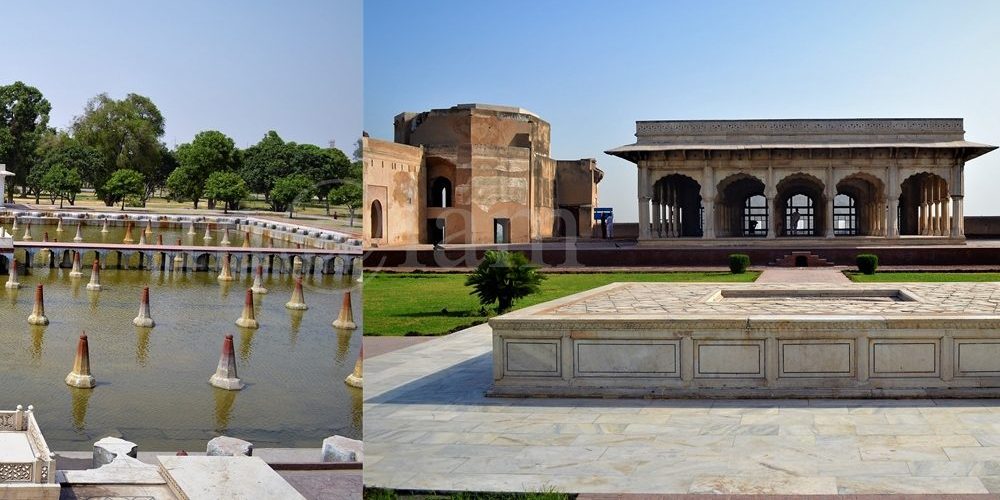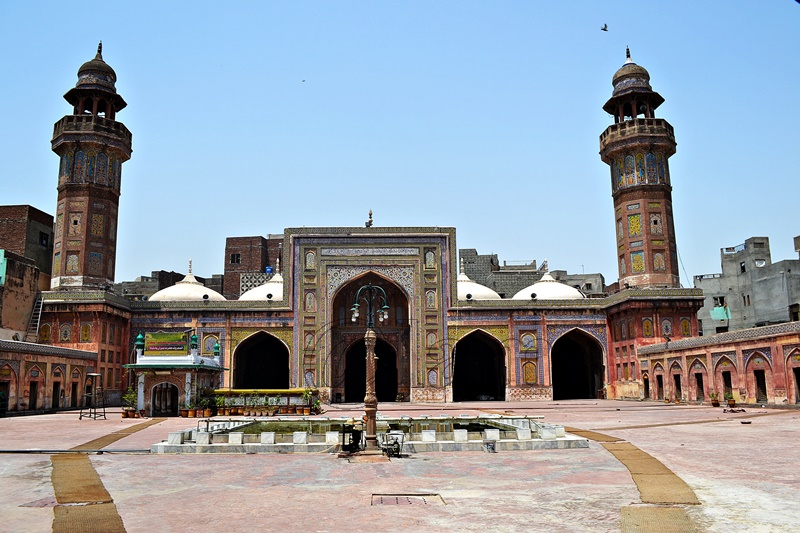Taxila: A Glimpse into Pakistan’s Rich Heritage
Taxila’s Past: A Journey through History
Taxila, a serene town nestled in the Punjab district of Pakistan, lies to the north of the vibrant twin cities of Rawalpindi and Islamabad, the capital city. The name “Taxila” finds its roots in the Sanskrit term “Taksasila,” which translates to “city of cut stones.” This illustrious town is a treasure trove of historical significance, its archaeological importance was first recognized in the late 1800s by the esteemed archaeologist Sir Alexander Cunningham. In recognition of its historical value, Taxila was designated as a UNESCO World Heritage Site of Pakistan in 1980.
Pre-History: Taxila’s Ancient Beginnings
The prehistoric legacy of Taxila harks back to the era of microlithic hunters before 3500 BC. Evidence, including the discovery of three notable caves, particularly the one at Khanpur, traces history to the Stone Age. Moreover, the excavation conducted by the renowned late professor Hasana Dani at Saraikala unveiled the existence of agricultural communities that thrived around 3000 BC. The site yielded a plethora of artifacts, including axes, chisels, spatulas, and an array of handmade pottery.
Taxila sprawls across an expansive 30 square kilometers, housing over 50 archaeological sites. The majority of these sites, dating from 600 BC to 500 AD, cluster around the Taxila Museum. Among these, three distinct cities—Bhir Mound, Julian, and Mohra Moradu—stand in remarkably preserved states, adorned with intricate stone and stucco images of Buddha. Other notable structural remains encompass Sirsukh, Dharmarajika, Mohra Moradu, Jandial, and Pippala temples, the Giri fortress, and the Dharmarajika, Bhallar, and Kunala stupas (burial mounds). The masonry techniques employed provide insights into their respective periods of origin, chronicling the significant stages in the life of the great sage.
The Political Scenario of Taxila
Throughout its history, Taxila has been a cradle of peace and knowledge. The city once thrived as a bastion of Buddhism and a renowned center of learning. Its prosperity was inextricably linked to its strategic location at the crossroads of three major trade routes: the Royal Highway from Eastern India, Western Asia, and Central Asia.
Taxila’s historical narrative is one of diverse rulers and empires. It began with the Achaemenid Empire in the 6th century BC, followed by the conquest of Alexander the Great in 326 BC. However, Alexander’s reign was brief, and the mantle passed to the Mauryan dynasty in 321 BC. Under the rule of the great Ashoka, Taxila reached its zenith, becoming a prestigious center of learning. Nevertheless, following Ashoka’s demise in 232 BC, the dynasty crumbled.
The Indo-Greeks briefly ruled Taxila until 190 BC, succeeded by the Scythians, who held sway from the 2nd century to the middle of the 1st century BC. It was during the Indo-Greek era that Taxila experienced its most creative period, particularly in the realm of Gandhara art. The longest period of rule was enjoyed by the Kushans, who arrived in 50 AD and ruled until the 5th century when the White Huns devastated the region.
Taxila University is believed to have existed even before Ashoka’s time, in the 7th century BC. Philosophers congregated here to establish their own schools of thought and provide instruction in various fields, including military science, medicine, political science, philosophy, religion, language, literature, and grammar.
Taxila: The Cradle of Gandhara Culture
Taxila, alongside Swat and Charsadda (formerly Pushkalavati), emerged as pivotal centers for culture, trade, and learning. They witnessed the construction of numerous monasteries and stupas, alongside Greek and Kushan towns such as Sirkap and Sirsukh. The Gandhara civilization not only exerted spiritual influence but also nurtured the renowned Gandhara culture, art, and learning. These centers gave rise to a unique form of sculpture, globally recognized as Gandhara Art.
Taxila Museum: A Glimpse into the Past
The ivy-clad Gothic-style Taxila Museum houses a wealth of archaeological treasures. It ranks among Pakistan’s best-maintained museums, drawing both local and foreign tourists. Its exhibits include an extensive collection of coins, jewelry, surgical instruments, vessels, grinders, rare inscriptions, plaster and terra-cotta figures, and stone and stucco sculptures. These artifacts are meticulously arranged in chronological order and comprehensively labeled.
Taxila’s Archaeological Wonders
Taxila’s archaeological landscape boasts a diverse array of stupas, mounds, and ancient cities, each with its unique history and significance. Here’s a brief overview:
Bhir Mound: From the Achaemenid to Bactrian-Greek Periods
Bhir Mound, Taxila’s earliest city, dates from the 6th century BC during the Achaemenid period to the 2nd century BC Bactrian-Greek period. It was situated on a small plateau along an ancient trade route. The city’s earliest evidence includes cramped houses made of early rubble and irregular streets. However, the Mauryan era brought consistent masonry, followed by lime-coating plaster during the Indo-Greek period, signifying a period of maturity. Notably, King Ambhi received Alexander the Great and his armies at Bhir Mound. The city’s glorious history eventually culminated with the construction of Sirkap by the Bactrian Greeks, marking a well-planned city.
Sirkap: The Greek Legacy
Sirkap, established by Bactrian Greek king Demetrius around 180 BC, became Taxila’s primary city with a significant Greek influence in its layout. The city was said to be encircled by a 6-meter thick rubble wall extending for 5 kilometers. Sirkap was first identified and excavated in 1912, with more comprehensive excavation carried out in 1944 and 1945 by Mortimer Wheeler and his team.
The city of Sirkap lies on the opposite side of the Tamara Stream. Its layout reveals meticulous planning, with affluent houses lining the main street and more modest dwellings further afield. Notably, Sirkap featured an advanced drainage system for managing runoff water and soaking wells for sewage. The main street also encompasses the Royal Residence, Sun Temple, Apsidal Temple, Double-Headed Eagle Stupa, and the Jain Temple. Remarkable findings include gold and silver jewelry discovered in a house near the Stupa, as well as Indian punch-marked bent bar coins. Sirkap thrived under various rulers, including Greeks, Scythians, Parthians, and finally the Kushans.
Sirkap remained a thriving city until 10 BC when King Kanishka of the Kushans founded Sirsukh. Intriguingly, excavations have unearthed coins not only from the Kushan rulers but also from the time of the Mughal emperor Akbar, indicating the city’s habitation for at least 1000 years after its initial establishment.
Sirsukh: The Well-Fortified Modern City
Sirsukh, built by the Kushan Kings in the 1st century A.D., assumes a rectangular shape with substantial defensive measures. While not fully excavated due to local farming, its layout suggests a well-fortified city inspired by Central Asian architectural influences.
Dharmarajika: A Stupa with a Sacred History
Dharmarajika Stupa, founded by the Maurya emperor Ashoka in the 3rd century BC, served as a repository for Buddha’s relics. Located 3 kilometers east of Taxila Museum, it ranks as one of the eight shrines and is considered Pakistan’s earliest Buddhist monument, also known as Chir Tope. In addition to the stupa, the site houses a monastic area to the north.
Julian: A Amalgam of Stupas and Monastic Serenity
Julian, situated in Taxila, graces the Haripur region of the Khyber Pakhtunkhwa province in Pakistan. Comprising several structures, including the main stupa, a monastery, and the University of Julian, it stands at a respectable altitude.
The main stupa boasts 21 votive stupas, some believed to be the tombs of revered monks. Notably, the site is home to the renowned “healing Buddha statue,”. Believers insert their fingers into the naval hole and offer prayers for healing or the fulfillment of wishes.
The monastery complex comprises 28 student rooms, a stone staircase leading to second-floor rooms with a similar arrangement, and statues of Buddhas positioned in front of some rooms surrounding a pool for washing. Additional facilities include a spacious assembly hall, a kitchen, storerooms, bathrooms, and stone mills for grinding spices and grains. The monastery, sadly, fell victim to fire in 455 CE at the hands of the White Huns, resulting in its destruction.
Mohra Moradu: A Monastery Shrouded in Mystery
Mohra Moradu, another well-preserved monastery nestled between Sirkap and Julian, suffered considerable damage in pursuit of treasure. While the main stupa was split apart, the lower portion remained protected. This monastery once served as a place of meditation However, the monastic cells surrounding the stupa now bear the scars of time.
Jandial Temple: A Glimpse of Greek Architectural Influence
The Jandial Temple, dating from the 2nd century BC to the 2nd century AD, showcases classic Greek architectural style. Located approximately 1.5 kilometers north of Sirkap, it stands as a unique building in Central Asia, closely mirroring the temples of classical Greece.
Practical Information for Visitors
Situated at an elevation of 512 meters above sea level, Taxila is easily accessible. Summers here can be scorching, with temperatures occasionally exceeding 40°C. In contrast, winters offer pleasant and cool weather, with temperatures ranging from 5°C to 15°C. The ideal time for a visit is between September and March, while the summer season extends from April to September.
Museum Entry Timings
The Taxila Museum welcomes visitors during summers from 08:30 am to 05:30 pm (1st April to 30th September) and during winters from 09:00 am to 04:00 pm (1st October to 31st March). However, please note that the museum remains closed on the first Monday of every month and during Muslim religious holidays.
Getting to Taxila
Taxila is conveniently located, being just 35 kilometers north of Rawalpindi and 45 kilometers from Islamabad, the capital city. Both cities are roughly an hour’s drive away from Taxila’s historical wonders.











